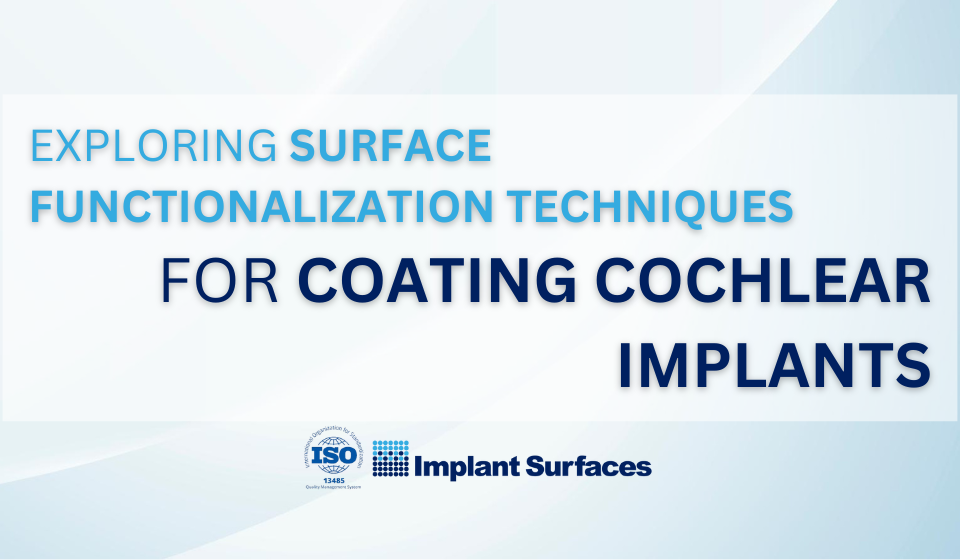
Advancements in Biodegradable Coatings for Controlled Degradation of Orthopedic Screws
May 7, 2024
Unveiling the Potential: Harnessing Bioinspired Design Principles for Biomimetic Implant Surfaces
May 9, 2024Implantable neural electrodes play a pivotal role in neuroprosthetics and brain-machine interface (BMI) technologies, facilitating direct communication between the brain and external devices. However, challenges such as tissue response and electrode longevity have limited their clinical efficacy. In recent years, significant strides have been made in developing advanced surface coatings to address these challenges and enhance the performance of neural electrodes.
Understanding Neural Electrodes:
Neural electrodes are intricate devices designed to record neural signals or deliver electrical stimuli to the nervous system. They consist of microelectrodes, typically made of materials like platinum, iridium, or silicon, which interface with neural tissue. The surface properties of these electrodes critically influence their biocompatibility, electrical properties, and long-term stability within the body.
Enhancing Biocompatibility:
One of the primary objectives in neural electrode design is to minimize tissue response and promote integration with neural tissue. Surface coatings play a crucial role in modulating the electrode-tissue interface to achieve optimal biocompatibility. Innovations such as bioactive coatings, including conductive polymers and peptide-functionalized surfaces, have shown promise in promoting neuron adhesion and reducing inflammatory responses.
Improving Electrode Performance:
Surface coatings also contribute to improving the electrical performance and longevity of neural electrodes. Functional coatings, such as graphene and carbon nanotubes, offer enhanced conductivity and charge transfer properties, enabling more sensitive and selective recording of neural activity. Additionally, hydrogel-based coatings provide a flexible and biocompatible matrix for embedding electrodes, reducing mechanical mismatch and tissue damage.
Addressing Longevity:
Prolonging the functional lifespan of neural electrodes is essential for long-term therapeutic applications. Advanced surface coatings can mitigate issues such as electrode fouling and degradation over time. Strategies like anti-fouling coatings and self-healing materials help maintain electrode integrity and performance, ensuring reliable neural signal recording or stimulation over extended periods.
Future Directions:
The field of neural electrode coatings is rapidly evolving, driven by interdisciplinary research at the intersection of materials science, engineering, and neuroscience. Future advancements may involve incorporating bioactive molecules for neuroregeneration, developing wireless and miniaturized electrode systems, and integrating nanotechnology for precise neural interfacing. These innovations hold immense potential for revolutionizing neural prosthetics, neurorehabilitation, and understanding brain function.
Conclusion:
Innovations in surface coatings for implantable neural electrodes represent a critical frontier in neuroengineering, offering unprecedented opportunities to advance neural interface technologies. By harnessing the principles of materials science and bioengineering, researchers and clinicians can overcome existing limitations and usher in a new era of neural-electronic integration, empowering individuals with neurological disorders and unlocking the mysteries of the human brain.




